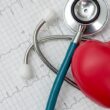Heart Disease in Children
The Challenge of a Young Heart: Recognising Heart Disease in Children and Adolescents
Although it may seem like a problem only for adults, heart disease can also impact kids and teenagers. Even though they are less common than in adults, heart issues in youth can have detrimental effects. This blog post explores acquired heart problems as well as congenital heart defects, which are present from birth, and helps parents and young people recognise the warning signs and take preventative measures to maintain a healthy heart.
Table of Contents
![Heart Disease in Children & Teens: Beyond Birth Defects [Symptoms, Types & Treatment] 1 OIP 3](https://ktechkhalil.com/wp-content/uploads/2024/04/OIP-3.jpg)
Congenital heart defects (CHDs) are defined as structural defects of the heart and accompanying blood arteries that exist from birth.
Heart Disease in Children
Types: There are different kinds of CHD, and each affects blood flow differently.
- Septal Defects: Perforations in the septum (the walls dividing the heart chambers) that permit aberrant blood flow (e.g., Ventricular Septal Defect (VSD), Atrial Septal Defect (ASD)).
- Valvular Defects: Heart valve abnormalities that prevent the valves from closing or opening properly (e.g., regurgitation, stenosis).
- Patent Ductus Arteriosus (PDA): The foetal connection between the aorta and the pulmonary artery, known as the patent ductus arteriosus (PDA), normally shuts at birth but sometimes stays open in certain infants.
- Coarctation of the Aorta: Aortic coarctation refers to a narrowing of the major artery that leaves the heart.
- Tetralogy of Fallot: A conglomeration of four cardiac abnormalities.
- Hypoplastic Left Heart Syndrome (HLHS): The underdevelopment of the left side of the heart is known as hypoplastic left heart syndrome (HLHS).
- Symptoms: Depending on the particular CHD and its severity, symptoms can change. Typical indicators consist of:
- Blueish skin color (cyanosis): Cyanosis, or blueish skin tone, is caused by low blood oxygen levels, and is most noticeable around the lips and fingertips.
- Breathing too quickly or experiencing dyspnea: The body’s attempt to make up for the reduced flow of oxygen.
- Fatigue: Easy tiring may result from the heart’s inefficiency.
- In newborns with serious CHDs: inadequate nutrition and failure to thrive are common.
- Chest pain or discomfort: Less frequent, yet possible in certain CHD cases.
- Swollen ankles, legs, or abdomen: A possible consequence of heart failure is fluid accumulation.
- Heart murmur: An irregular sound that a stethoscope can pick up on may indicate a cardiac condition.
Heart Disease in Children
Diagnosis: Echocardiograms, which are cardiac ultrasounds, and other procedures can be used to diagnose congenital heart defects (CHDs).
Treatment: Options for treatment vary depending on the type of CHD. Medication, heart catheterization, or surgery are possible options.
Concerns that were acquired: Heart Conditions Developed Later in Life:
Heart Disease in Children
- Definition: Previously healthy hearts affected by heart issues that arise after birth.
- Categories: Among the common heart conditions that kids and teenagers acquire are:
- Rheumatic Heart Disease: Untreated strep throat can lead to rheumatic heart disease, a condition that damages heart valves.
- Kawasaki Disease: A rare inflammatory illness that affects blood arteries, especially those supplying the heart, is called Kawasaki disease.
- Myocarditis: Virus-related inflammation of the heart muscle.
- Pericarditis: Inflammation of the sac that surrounds the heart, known as pericarditis.
- Cardiomyopathy: The heart muscle weakens, stiffens, or enlarges.
- Symptoms: Acquired heart disorders and congenital heart diseases often have similar symptoms. They might additionally consist of:
- Fever: Often associated with illnesses such as myocarditis and Kawasaki disease.
- Joint pain: Rheumatic heart disease may cause this.
- Palpitations: The sensation of irregular heartbeats, racing, or fluttering.
- Diagnosis: To diagnose acquired heart diseases, clinicians use physical examinations, family histories, and testing including echocardiograms and blood tests, much like they do for congenital heart disease (CHD).
- Treatment: The course of treatment is determined by the particular ailment. In severe situations, surgical intervention, anti-inflammatory medications, and medication may be required.
Leading Young Hearts to a Future of Health
Heart Disease in Children
- Early Detection: Hearing heart murmurs during routine paediatric examinations is essential for early detection.
- Good Lifestyle Practices: Eating a balanced diet, getting regular exercise, and keeping a healthy weight all help kids and teenagers’ hearts function at their best.
- Immunisations: Receiving the appropriate immunisations aids in preventing infections that may result in acquired cardiac disorders.
- Vaccinations: Encourage kids and teenagers to communicate honestly about any symptoms they may be experiencing.
Knowing the various forms of heart disease that can afflict kids and teenagers as well as the symptoms, parents and young

![Heart Disease in Men: Don't Wait Until It's Too Late [Risk Factors, Prevention & Treatment] 2 Heart Disease in Men](https://ktechkhalil.com/wp-content/uploads/2024/04/R-8-110x110.jpg)
